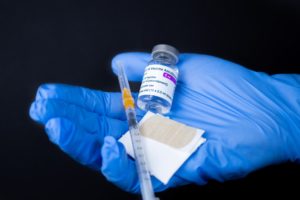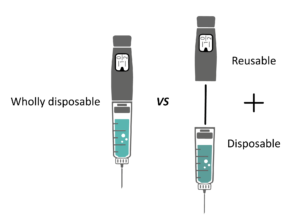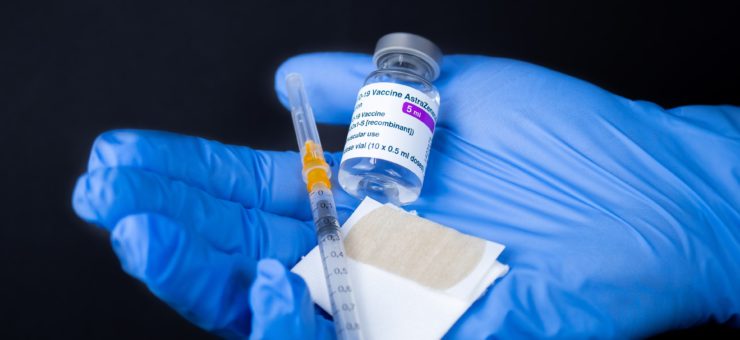Drug delivery device trends for 2022
23 February 2022
The drug delivery industry depends on innovation, and keeping abreast of the latest trends can help us predict the future. We are in the privileged position of being at the centre of many of the most exciting drug delivery devices developments and we have compiled the following top trends for 2022:
Continued Covid dividend

Countries around the world are still struggling to manage waves of Covid infections. The highly infectious Omicron variant has undone some of the progress made by vaccination campaigns in the wealthier economies. Nevertheless, the suffering and disruption brought by Covid has led to some profound changes and benefits for the healthcare industry, which we have coined “the Covid dividend.”
Before Covid, political leaders may have considered vaccine strategy primarily to be concerned with public health. However, the continuing threat of Covid is likely to remind them of the vital role healthcare plays in national security and economic welfare too. National governments and supranational organisations like the European Union seem to be announcing new vaccine procurement deals almost daily.
The US Vaccines National Strategic Plan (published on 19 January 2021) says that “there remains a significant need for new and improved vaccines and vaccination strategies, such as the development of new vaccines against vector-borne diseases, a more broadly protective universal influenza vaccine, and improved strategies for maternal immunization. Developing new vaccines includes modernizing the domestic [US] vaccine enterprise to be highly responsive, flexible, and scalable; improving capacity for agile and rapid responses to emerging influenza threats; and developing more broadly protective vaccines.”[1] Therefore we can be confident that funding into vaccine development, and the devices to deliver vaccines, will continue to be high for the foreseeable future.
Vaccines are not the only area of healthcare in great demand due to Covid and the risk of other pandemics. Diagnostics (point-of-care and laboratory), critical care equipment, and personal protective equipment are likely to benefit strongly from the Covid dividend too.
[1] https://www.hhs.gov/vaccines/vaccines-national-strategic-plan/index.html
Renewed demand for reusable devices
Many categories of drug delivery device can be developed as either:
- Disposable, or
- Part reusable and part disposable.

Figure 1: Part reusable an part disposable devices
There seems to be a trend whereby pioneering devices tend to be partly reusable, and then wholly disposable versions appear and take some of the market. Examples include:
- Pen injectors, where the earliest models (NovoPen) were reusable and then disposable models (FlexPen, SoloSTAR, KwikPen, FlexTouch etc.) appeared
- Dry powder inhalers, where the earliest models (Aerohalor, Spinhaler etc.) were reusable[1] and then disposable models (Turbuhaler, Diskus, Ellipta, NEXThaler etc.) appeared
Many of the devices Springboard is being asked to develop at the moment may indicate that the pendulum is swinging back towards partly reusable devices. Drivers are likely to include:
- Patients and other stakeholders are becoming more sensitive to the environmental impact, especially from plastic waste, of fully disposable devices. Sustainability is discussed in more detail below.
- The current generation of devices tends to be more complicated and costly than the previous generation. For example, on-body injectors are likely to have more components and mechanisms, and therefore higher built-in cost than prefilled syringes, safety systems and autoinjectors. The economics of fully disposable devices sets an upper limit on their cost.
- Many new devices have a “connectivity” aspect. The electronics and batteries that are typically involved lend themselves to reusable modules.
Launch of more recycling schemes
Used drug delivery devices create biohazard waste that needs to be incinerated, and typically some plastic waste as well. Pharmaceutical companies and device manufacturers are looking for ways to reduce the waste going to landfill, and one of the strategies is return-to-manufacturer schemes.
GSK ran a return-to-manufacturer scheme for its inhalers from 2011 to 2020. Sources indicate that take-up was not as high as GSK wanted, although more than 2 million inhalers were recycled by the scheme. GSK has said that it “believes there needs to be a focus on a wider, joint-working approach across industry, rather than our own standalone approach.”[2]
Nevertheless, some manufacturers are piloting new schemes, such as:
- Novo Nordisk’s PenCycle pilot was launched on 1 November 2021. If successful, it could be expanded to cover the whole of the United Kingdom and could recycle many of the 2.5 million FlexPen and FlexTouch devices sold in the UK each year.[3]
- Chiesi’s inhaler recycling scheme started in February 2021 and covers any inhaler from any manufacturer. It could reduce the waste caused by the 73 million inhalers prescribed each year in the UK.[4]
We can expect to see more recycling schemes being announced in 2022 if these pilots are successful.
Novel sterilisation technologies
Ethylene oxide and gamma irradiation account for the majority of medical device sterilisation. However, ethylene oxide has a relatively long cycle time (including aeration time to reduce sterilant concentration) and the sterilant is explosive and carcinogenic.
Gamma radiation can damage materials, turning transparent materials yellow or brown, and crosslinking certain useful engineering polymers like PTFE and PP. Gamma can also damage drugs and electronics, and a global shortage of cobalt-60 is limiting capacity.[5]
There have been some innovations over recent years, such as using nitrogen dioxide (Noxilizer), but it takes time to validate processes, adapt designs for new sterilisation methods, and overcome the risk aversion that is pervasive in the pharmaceutical industry. Demand for alternative sterilisation methods will persist through 2022 and beyond.
Summary
More than at any other time, in 2022 the world recognises the need for high quality, accessible, and sustainable healthcare. We are likely to see remarkably high levels of investment in vaccines, diagnostics, critical care, personal protective equipment and reducing environmental impact.
-Tom Oakley
[1] “Dry powder inhalation: past, present and future” A. H. de Boera, P. Hagedoorna, M. Hoppentochta, F. Buttinib, F. Grasmeijera and H. W. Frijlinka, EXPERT OPINION ON DRUG DELIVERY, 2017 VOL. 14, NO. 4, 499–512 http://dx.doi.org/10.1080/17425247.2016.1224846
[2] https://pharmaceutical-journal.com/article/news/inhaler-recycling-scheme-that-cut-carbon-emissions-equivalent-to-more-than-8500-cars-is-scrapped
[3] https://pharmaceutical-journal.com/article/news/first-ever-injection-pen-recycling-pilot-launched-in-uk-pharmacies
[4] https://pharmaceutical-journal.com/article/news/chiesi-launches-postal-asthma-inhaler-recycling-scheme


